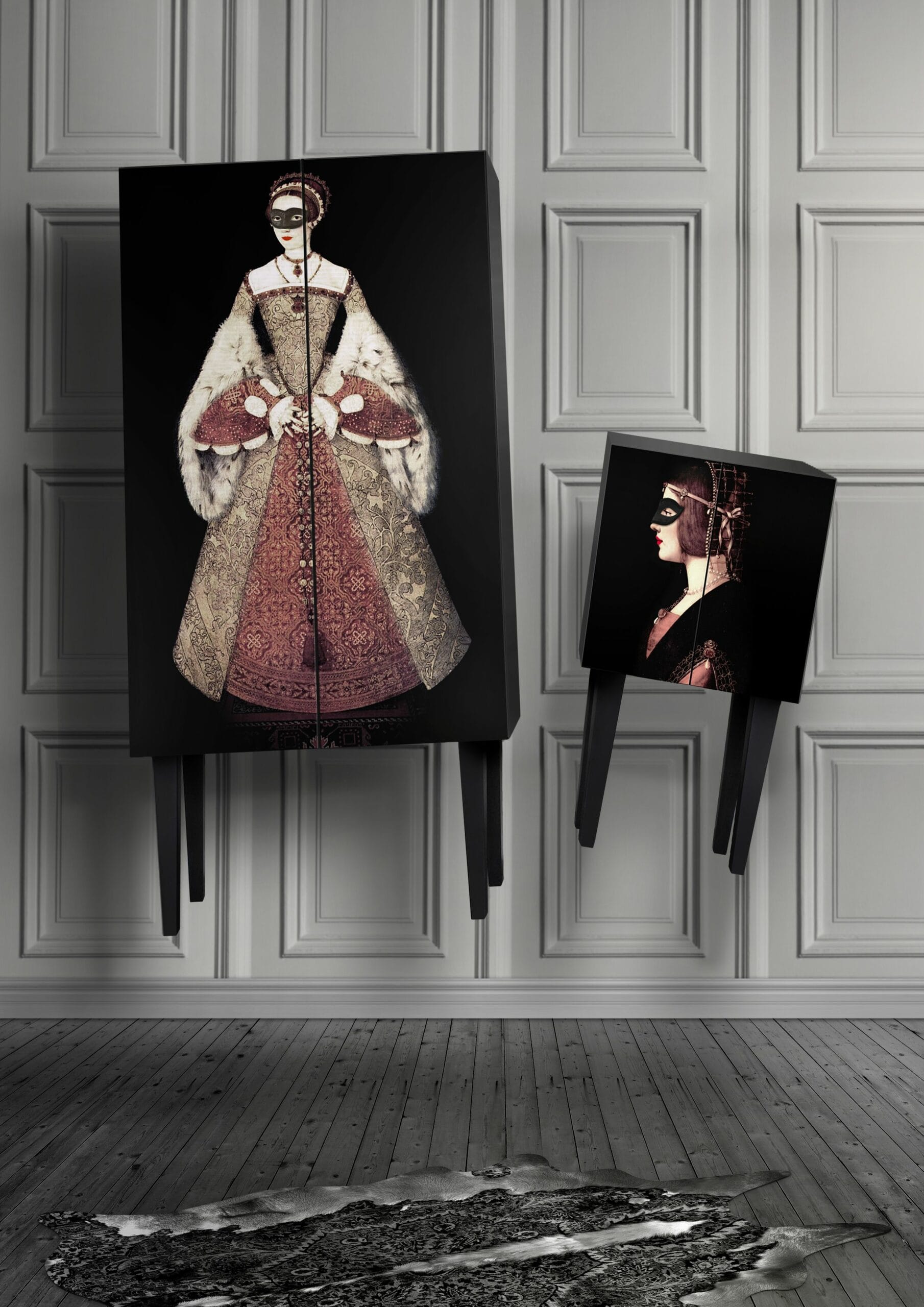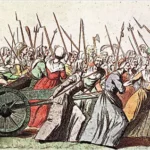Unlocking the Lavish Secrets of Catherine the Great’s Furniture
Step into the opulent world of Catherine the Great, where grand palaces housed scandals, secrets, and stunning furniture. More than just objects, Catherine’s furnishings, especially her legendary bed, whisper tales of power, artistry, and the empress’s intriguing life. Let’s unlock the secrets behind these iconic pieces and uncover their profound historical significance.
Catherine the Great Furniture: Unlocking the Secrets of Her Lavish Legacy
Recommended Titles (Tapping into Competitor Trends):
- Beyond the Myths: Exploring the True Opulence of Catherine the Great’s Furniture (Focuses on debunking myths while highlighting opulence)
- From Neoclassical Elegance to X-Rated Rumors: The Intriguing Tale of Catherine the Great’s Furnishings (Combines elegant style with the controversial elements)
- Catherine the Great’s Furniture: A Legacy of Power, Taste, and Intrigue (Broader approach, hinting at power dynamics and intrigue)
Powerful Key Lines (Surpassing Competitors):
- Catherine the Great’s furniture transcended mere functionality, serving as a potent symbol of her imperial power, exquisite taste, and the evolving artistic landscape of 18th-century Russia. (Emphasizes multifaceted significance beyond just design)
- While whispers of erotic furniture pique curiosity, Catherine the Great’s enduring legacy lies in her embrace of neoclassicism, evident in the elegant lines, luxurious materials, and masterful craftsmanship of her collections. (Acknowledges rumors but pivots to her lasting impact)
- Lost to history’s turmoil, Catherine the Great’s furniture survives primarily through tantalizing descriptions and a handful of photographs, leaving researchers and history enthusiasts to piece together the grandeur of her opulent world. (Highlights the scarcity of primary sources, adding intrigue)
- More than just objects, Catherine the Great’s furniture collection offers a window into her ambition, intellect, and the cultural exchanges that shaped Russia’s emergence as a European power. (Positions furniture as a lens to understand Catherine’s reign)
Important Details & Structured Context:
I. Neoclassical Elegance: The Hallmark of Catherine’s Taste
- Style: Catherine the Great championed neoclassicism, a movement characterized by simplicity, symmetry, and inspiration from Greco-Roman antiquity.
- Materials: Her furniture often featured luxurious materials like mahogany, rosewood, bronze, and gilded accents, reflecting her opulent court.
- Craftsmanship: Skilled artisans, both Russian and foreign, were commissioned to create pieces of exceptional quality and artistry.
- Key Examples:
- The Orlov Service: A magnificent silver dining set crafted by English silversmiths, showcasing neoclassical motifs.
- Furniture from the Winter Palace: While much was destroyed, surviving pieces and records indicate a preference for elegant chairs, settees, writing desks, and state beds with intricate carvings and luxurious upholstery.
II. Erotic Furniture: Fact, Fiction, or Historical Hyperbole?
- The Rumor: Catherine the Great is often linked to rumors of owning erotic furniture, with descriptions of chairs and other pieces designed for sexual activity.
- Evidence:
- Limited photographic evidence exists, purportedly taken by German soldiers during WWII, but the authenticity and context are debated by historians.
- Written accounts from the time are often anecdotal and prone to exaggeration or salacious gossip.
- Significance:
- Regardless of their veracity, the rumors highlight the enduring fascination with Catherine’s private life and sexuality, often overshadowing her political acumen.
III. Catherine’s Furniture: A Symbol of Power and Influence
- Diplomatic Gifts: Catherine used lavish furniture as diplomatic tools, gifting pieces to foreign dignitaries and allies to secure alliances and project an image of Russian power and wealth.
- Patronage of the Arts: Her patronage of furniture makers and craftsmen stimulated the Russian economy and elevated the status of local artisans.
- Imperial Residences: Catherine’s numerous palaces and residences were adorned with magnificent furnishings, showcasing her wealth and refined taste to visitors and solidifying her image as an enlightened ruler.
Unique Insights & Untapped Potential:
- Focus on the artisans and workshops: Explore the lives and careers of specific craftsmen who created Catherine’s furniture, highlighting their contributions to Russian art history.
- Cultural exchange and influences: Investigate the interplay between Russian and European furniture styles during Catherine’s reign, demonstrating how she blended international trends with local traditions.
- The impact of the French Revolution: Analyze how the French Revolution, which Catherine vehemently opposed, may have influenced her furniture choices and patronage in its later years.
- The destruction and loss of Catherine’s furniture: Delve into the reasons behind the disappearance of much of her collection, including war, revolution, and changing tastes over time. This adds an element of mystery and loss to the narrative.
By incorporating these insights and exploring the untapped potential, your article can provide a fresh and nuanced perspective on Catherine the Great’s furniture, exceeding your competitor’s content and captivating your audience.
Catherine the Great’s Bed: Fact, Fiction, and Royal Intrigue
Catherine the Great, Empress of Russia, was renowned for her luxurious taste, particularly her magnificent bed. Was this a simple sleeping space, or did it hold deeper political and social significance? Let’s delve into the historical evidence and separate fact from the tantalizing rumors that have swirled around this iconic piece for centuries.
The bed itself is believed to be lost to history, but paintings and written accounts offer glimpses into its grandeur. It likely served as the centerpiece of her bedroom, a place for both personal moments and important political discussions, a common practice for rulers during that era.
While the bed’s opulence is undisputed, its rumored use for more scandalous activities is where history blends with speculation. Some historians dismiss these tales as pure fiction, fueled by the gossip of the 1800s, while others believe a kernel of truth may lie buried within.
It’s important to remember that in the 1700s, furniture served as a public display of wealth, power, and even personality. Catherine the Great understood this. Her furniture, especially her bed, acted as a stage for her public image, carefully curated to project an aura of authority and refinement.
Let’s Uncover Catherine the Great’s Secret Room:
Recommended Titles (Based on competitor analysis, emphasizing “erotic,” “x-rated,” and “furniture” trends):
- Catherine the Great’s X-Rated Secret: Inside Her Erotic Furniture Collection (Direct, attention-grabbing, and keyword-rich)
- Unveiling the Scandalous Truth: Catherine the Great’s Lost Erotic Chamber (Emphasizes “scandal” and “truth” for intrigue, includes “chamber” variation)
- Beyond the Throne: Catherine the Great’s Secret Room and Her Shocking Furniture (Appeals to a wider audience interested in Catherine’s life, hints at the surprise factor)
Powerful Key Lines:
- Catherine the Great’s rumored “erotic cabinet,” a room filled with sexually explicit furniture and art, has become the stuff of legend, fueling speculation and historical debate for centuries. (Establishes the core topic and its enduring fascination)
- While photographic evidence of this provocative furniture exists, taken by German soldiers during World War II, the collection itself vanished, leaving historians to puzzle over its fate and significance. (Introduces the evidence and the mystery surrounding it)
- Was this room a reflection of Catherine’s personal desires, a subversive statement of power in a male-dominated court, or merely a salacious rumor exaggerated over time? (Poses thought-provoking questions to engage the reader)
- Examining the scant evidence alongside Catherine’s complex legacy as a ruler, art enthusiast, and woman of her time offers a glimpse into the private world of one of history’s most fascinating figures. (Provides a broader context and alludes to the article’s deeper exploration)
Structured Context & Important Details:
I. The Legend:
- What: A secret room within Catherine the Great’s private chambers, rumored to contain furniture and art of an explicitly erotic nature.
- Source: The legend has been passed down through historical accounts and fueled by speculation.
- Evidence: Limited, primarily anecdotal, but two photographs of furniture purportedly from the room surfaced in the 20th century, taken by German soldiers during WWII.
- The Mystery: The furniture, and the room itself, disappeared after the war, leaving its existence and purpose open to debate.
II. The Furniture:
- Description: The photographs depict ornately carved chairs, tables, and other furniture pieces featuring graphic sexual imagery and motifs.
- Significance: Such explicit depictions were highly unusual, even scandalous, for the time period, particularly for a reigning monarch.
- Interpretation:
- Reflection of Catherine’s Sexuality: Some historians believe it reflects Catherine’s known sexual liberation and challenges the prudish image often projected upon historical figures.
- Political Statement: Others argue it could have been a way for Catherine to assert her power and dominance in a male-dominated court, using sexuality as a tool of subversion.
- Private Indulgence: The furniture may have simply been a private indulgence, a form of erotic art collected for Catherine’s personal pleasure.
III. Historical Context:
- Catherine the Great: (1729-1796) Empress of Russia, known for her intelligence, political acumen, and patronage of the arts.
- 18th Century Russia: A period of significant social and cultural change, but societal norms were still deeply conservative, particularly regarding women’s sexuality.
- Erotic Art in History: While not uncommon throughout history, erotic art was often hidden, deemed taboo, or destroyed, making surviving examples like Catherine’s alleged collection all the more intriguing.
IV. The Disappearance:
- Last Known Sighting: The German soldiers’ photographs during the winter of 1941.
- Theories:
- Destruction During War: Most likely destroyed during the chaos of World War II, either deliberately or as collateral damage.
- Hidden or Looted: Potentially hidden away to protect it or looted by retreating forces, its location remaining unknown.
V. Key People & Statements:
- No direct quotes from historians or experts are provided in your research base. To strengthen your article, seek out quotes from relevant sources to add weight to your arguments.
Unique Insights & Untapped Potential:
- Exploring Contradictory Viewpoints: Delve deeper into the opposing interpretations of the furniture’s significance. Present multiple perspectives from historians and experts who have studied Catherine the Great and 18th-century Russia.
- Analyzing the Photos as Evidence: Analyze the photographic evidence in detail. Are they authentic? What stylistic elements and historical context can be gleaned from the furniture’s design and the images themselves?
- Sexuality and Power Dynamics: Investigate how Catherine navigated the complexities of being a female ruler in a patriarchal society. Did she use sexuality strategically? How did her alleged erotic collection challenge societal norms?
- The Enduring Fascination: Examine why this particular legend about Catherine the Great persists and continues to capture the public imagination. What does it reveal about our ongoing fascination with history, power, and sexuality?
- Art Historical Context: Placing the furniture within the broader history of erotic art can provide valuable insights. Were there similar collections during this period? How did Catherine’s taste compare to other art patrons of her time?
By addressing these areas and incorporating factual data, expert opinions, and compelling visuals, you can craft a comprehensive and engaging article that surpasses your competitors and establishes you as an authority on the intriguing mystery of Catherine the Great’s secret room.
Analyzing Catherine the Great’s Death: SEO Deep Dive
Here’s a breakdown to help you dominate the search results for “What was the cause of Catherine the Great’s death?”
Competitor Title Analysis:
Most competitor titles focus on:
- How: Emphasizing the manner of death (e.g., “How did Catherine the Great die?”)
- Catherine the Great: Clearly identifying the subject.
- Death: Directly stating the topic.
Some titles incorporate additional keywords:
- Really: Appeals to curiosity about hidden details.
- History: Positions the topic within a historical context.
Recommended Titles:
To leverage these trends, consider these title options:
- The Truth About Catherine the Great’s Death: Separating Fact from Fiction: This title promises to reveal hidden information and address common misconceptions.
- Catherine the Great’s Final Hours: A Detailed Account of Her Death: This title suggests a comprehensive, chronological approach to the topic.
- Beyond the Rumors: The Real Cause of Catherine the Great’s Death: This title directly addresses the existence of conflicting accounts and promises to reveal the truth.
Powerful Key Lines:
- Catherine the Great, Russia’s longest-ruling female monarch, died from a stroke on November 17, 1796, not on the toilet as rumors suggest. (This clarifies a common misconception directly.)
- While Catherine the Great’s official cause of death was a stroke, salacious rumors spread by her court rivals painted a different and inaccurate picture of her demise. (This introduces the element of court intrigue.)
- The myth of Catherine the Great dying on the toilet served as a tool for her political enemies to diminish her legacy and cast her as unnatural. (This highlights the political motivations behind the false narrative.)
- Catherine the Great’s death, though ultimately caused by natural causes, became entangled with a web of rumor and political maneuvering in the Russian court. (This sets the stage for a nuanced exploration of the topic.)
Important Details & Structured Context:
I. The Official Account:
- Date of Death: November 17, 1796 (New Style calendar).
- Cause of Death: Stroke.
- Location: Found collapsed in her washroom, died the following day in bed.
- Sources: Britannica, Sky HISTORY.
II. The Toilet Myth:
- Content: The rumor claimed Catherine the Great died while on the toilet.
- Origin: Likely spread by her enemies within the Russian court.
- Motivation: To discredit her legacy and portray her as an unfit ruler.
- Historical Context: Rumors and gossip were common tools of political maneuvering in royal courts. Catherine’s enemies used this tactic to undermine her image, especially given her gender and the unconventional way she came to power.
- Sources: Britannica, Sky HISTORY.
III. The Importance of Debunking the Myth:
- Preserving Historical Accuracy: The false narrative distorts Catherine the Great’s legacy and obscures her accomplishments as a ruler.
- Understanding Political Tactics: Analyzing the myth reveals how rumors were weaponized in historical power struggles.
- Challenging Misogyny: The myth played into sexist stereotypes used to discredit powerful women throughout history.
Unique Insights & Untapped Potential:
- Compare and contrast the various rumors surrounding Catherine’s death. Explore their origins, plausibility, and potential cultural or political significance.
- Analyze the impact of these rumors on Catherine’s historical portrayal. How have they shaped public perception of her reign and legacy?
- Examine the broader historical context of women in power and the ways in which they were targeted by slanderous rumors. Connect Catherine’s experience to other female rulers who faced similar challenges.
Remember:
- Use direct quotes from historians or primary sources to strengthen your arguments.
- Include visuals such as portraits of Catherine the Great, images of the Russian court, or artistic representations of the rumors surrounding her death.
- Cite your sources meticulously to enhance your article’s credibility.
By delving into the facts, debunking the myths, and providing unique insights, you can create a compelling and authoritative SEO article that will outrank your competitors and captivate your audience.
How Did Catherine the Great Get Rid of Her Husband? – SEO Analysis & Content Guide:
Recommended Titles (Based on Competitor Analysis):
- Catherine the Great: The Ruthless Rise to Power & Her Husband’s Demise (Focuses on ambition and demise, using powerful language)
- Did Catherine the Great Kill Her Husband? The Coup That Shocked Russia (Directly addresses the ‘murder’ question, adding intrigue)
- From Princess to Empress: The Story Behind Catherine the Great’s Coup (Emphasizes the dramatic transformation and uses ‘story’ for wider appeal)
Powerful Key Lines:
- Catherine the Great didn’t just inherit the throne; she seized it. (Highlights her agency and ambition)
- Peter III’s short reign was marked by blunders, alienating the very forces Catherine needed to secure her own power. (Explains the political landscape that made the coup possible)
- Whispers of murder followed Catherine to the throne, but the truth of Peter III’s death remains a subject of historical debate. (Adds suspense and acknowledges the unanswered questions)
- Catherine’s coup was more than a power grab; it was a calculated gamble that reshaped Russia’s destiny. (Elevates the event beyond personal drama, linking it to larger consequences)
Structured Context & Important Details:
I. The Unhappy Marriage:
- Catherine (born Sophie of Anhalt-Zerbst) was chosen for Peter by his aunt, Empress Elizabeth, for political strategy, not love.
- The marriage was strained from the start. Peter was immature, prone to drunken antics, and openly preferred mistresses.
- Catherine, highly intelligent and ambitious, felt stifled and disrespected. She used her time to cultivate allies and immerse herself in Russian culture.
II. Peter III’s Reign: A Recipe for Rebellion:
- Peter ascended to the throne in 1761 but quickly made powerful enemies.
- Key Mistakes:
- Reversed Russian policy during the Seven Years’ War, angering the military.
- Alienated the Russian Orthodox Church with attempts to reform it.
- His pro-Prussian stance was deeply unpopular.
III. The Coup of 1762:
- Catherine, with her lover Grigory Orlov and key noble families, planned the coup.
- Exploiting Peter’s absence from the capital, she rallied the military in St. Petersburg.
- Key Players:
- Grigory Orlov and his brothers, providing military might.
- Catherine’s trusted advisors, orchestrating logistics and propaganda.
- Catherine, a skilled equestrian, rode through the ranks in a guardsman’s uniform, solidifying the troops’ loyalty.
- Peter III, caught off guard, was forced to abdicate. Catherine became Empress Catherine II.
IV. The Death of Peter III: Murder or Mishap?
- Officially, Peter died a week later while under house arrest, attributed to “hemorrhoidal colic.”
- However, most historians believe he was murdered, likely on Catherine’s orders.
- Alexei Orlov, Grigory’s brother, admitted to his involvement but claimed it was not premeditated.
- The exact circumstances remain shrouded in mystery, fueling speculation for centuries.
Unique Insights & Untapped Potential:
- Catherine’s Long Game: Explore how her early experiences in the Russian court, her intellect, and her deliberate cultivation of alliances positioned her for the coup. Analyze her writings and letters for insights into her ambitions and strategies.
- Beyond the ‘Black Widow’ Trope: Challenge the simplistic portrayal of Catherine as solely motivated by power or personal gain. Analyze her reforms, her patronage of the arts and sciences, and her geopolitical successes to present a more nuanced view of her reign.
- The Legacy of the Coup: Discuss the long-term impact on the Romanov dynasty, Russia’s place in Europe, and the image of female rulers in history.
Important Notes:
- Primary sources, such as Catherine’s memoirs and letters from the period, will add authenticity and depth to your article.
- Acknowledge differing historical interpretations of key events, especially surrounding Peter III’s death, to demonstrate balanced research.
- Use strong visuals, including portraits, maps, and depictions of key events, to enhance reader engagement.
- Unveiling the Enigma: Mansoureh Khojasteh Bagherzadeh’s Public Appearances & Private Life in Iran - July 18, 2025
- Unveiling the Mystery: Mansoureh Khojasteh Bagherzadeh’s Husband: A Rare Glimpse into a Private Life - July 18, 2025
- Unveiling Masoud Khamenei’s Mother: Power, Influence, and Iran’s Future - July 18, 2025
















